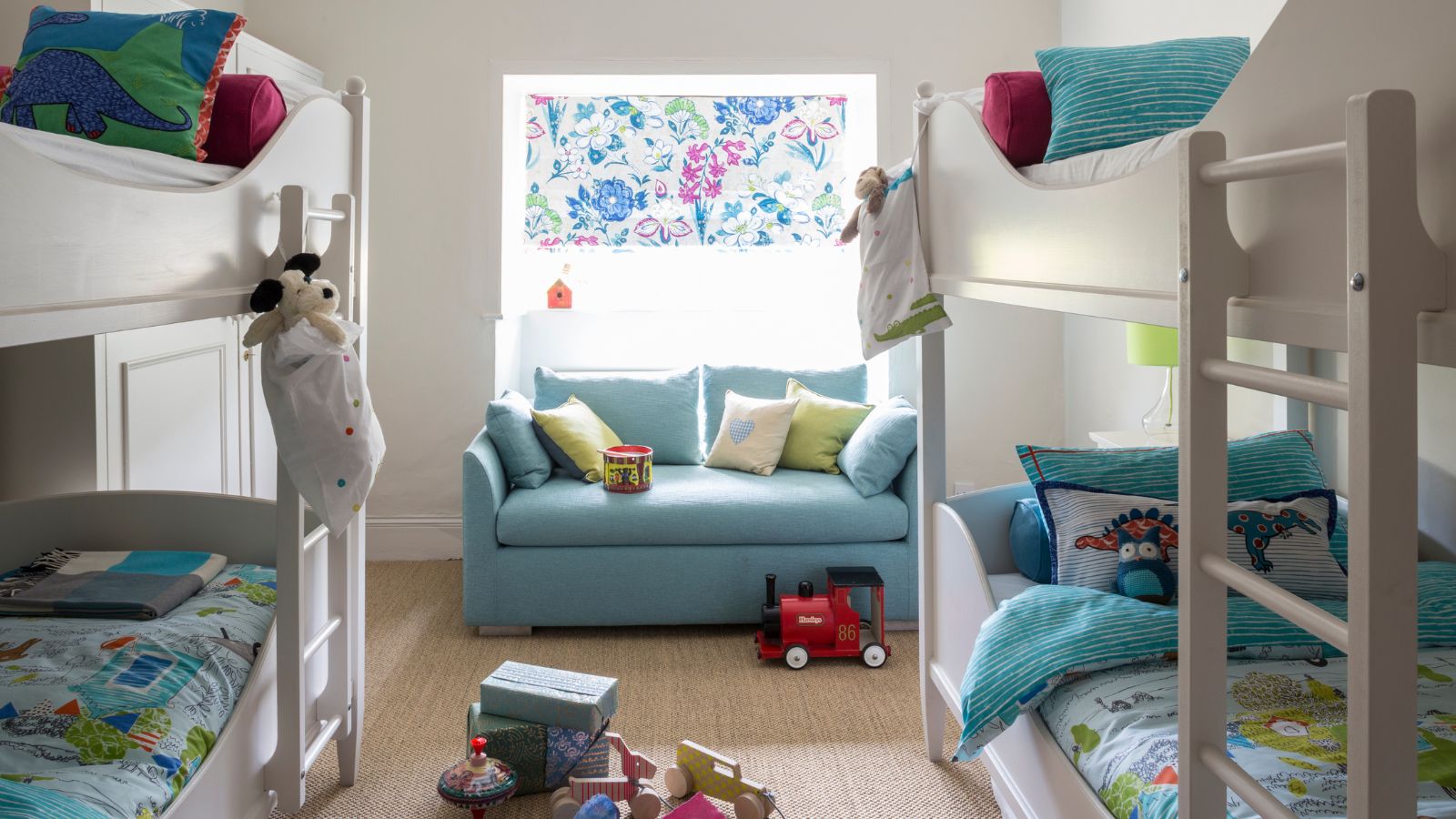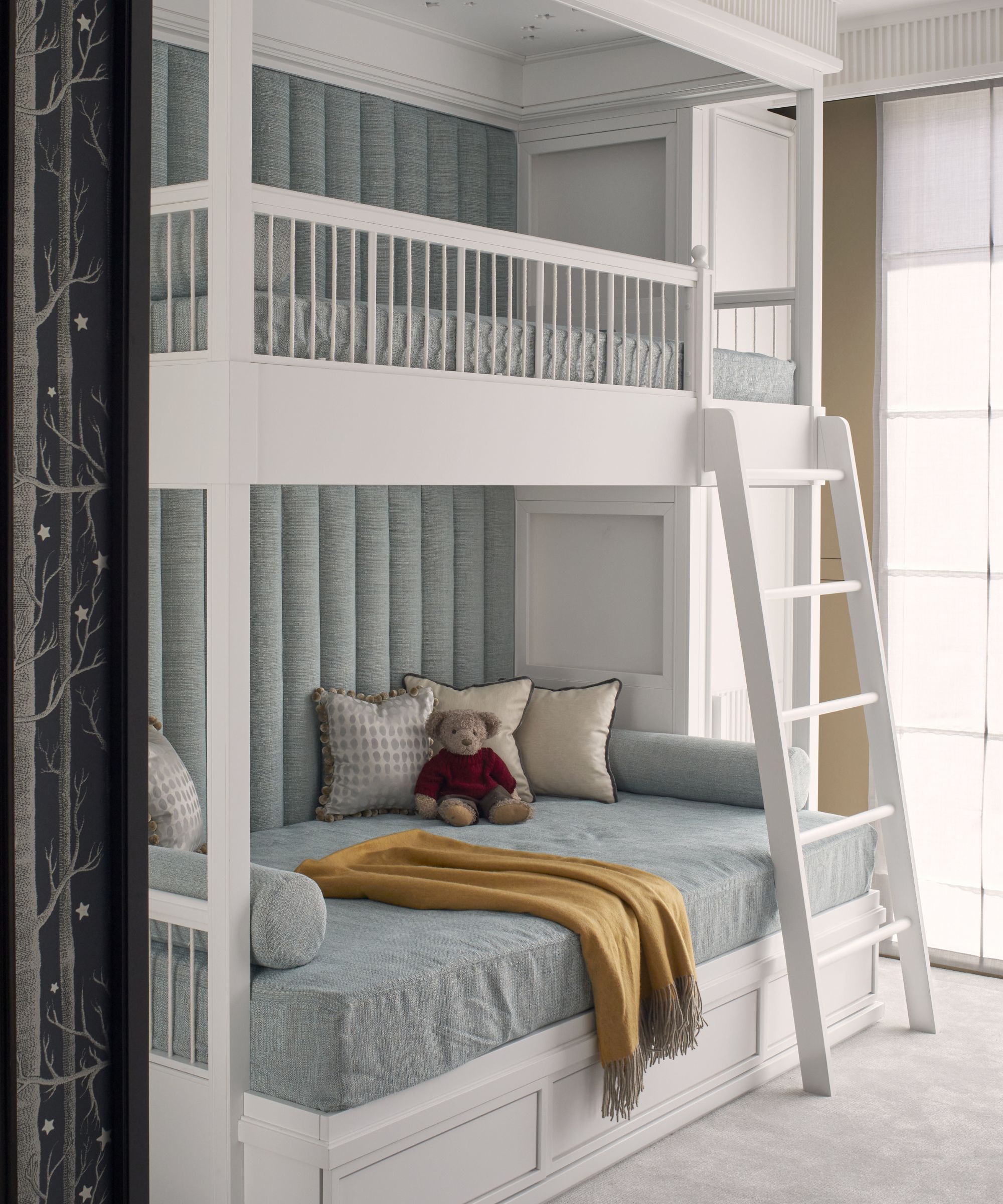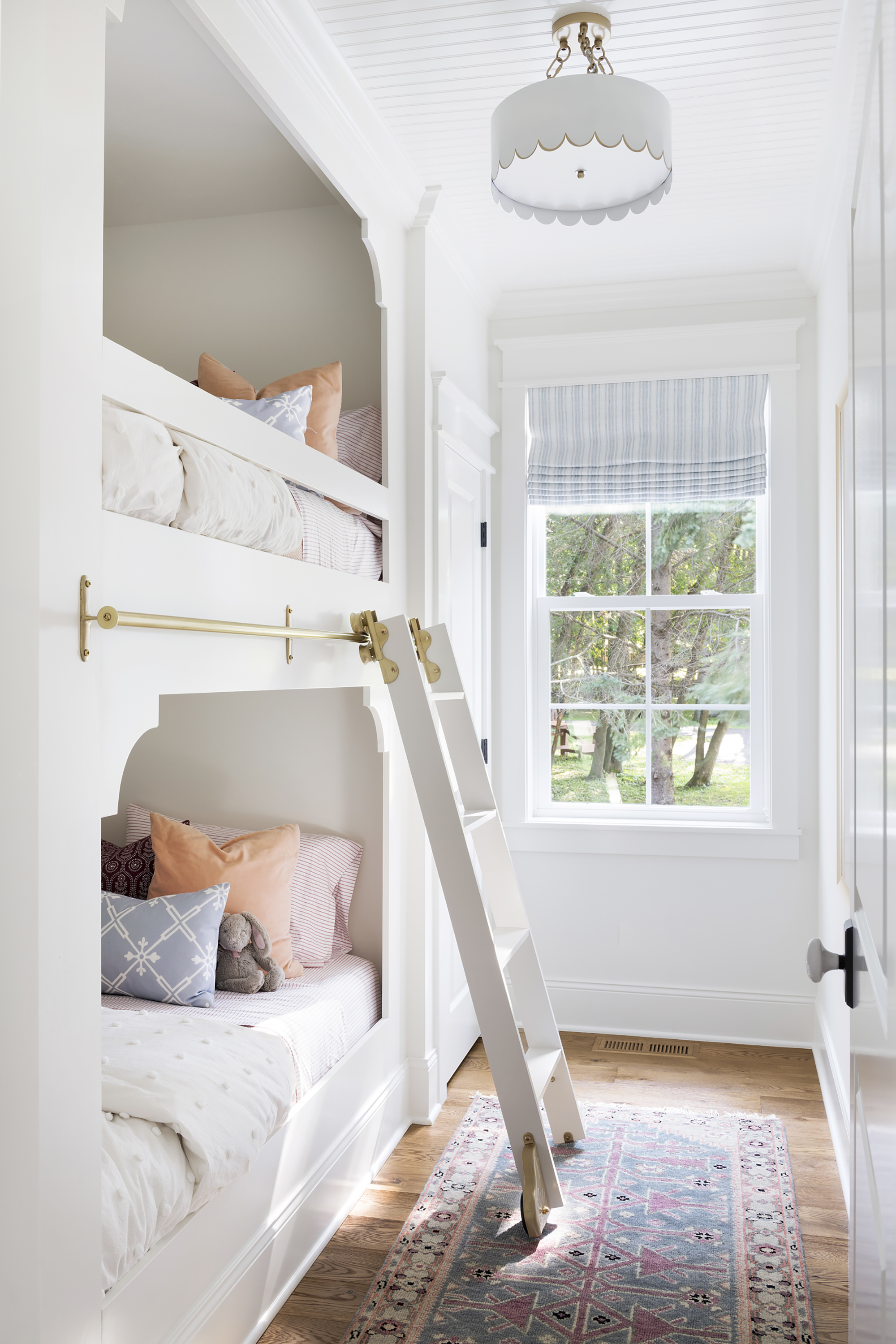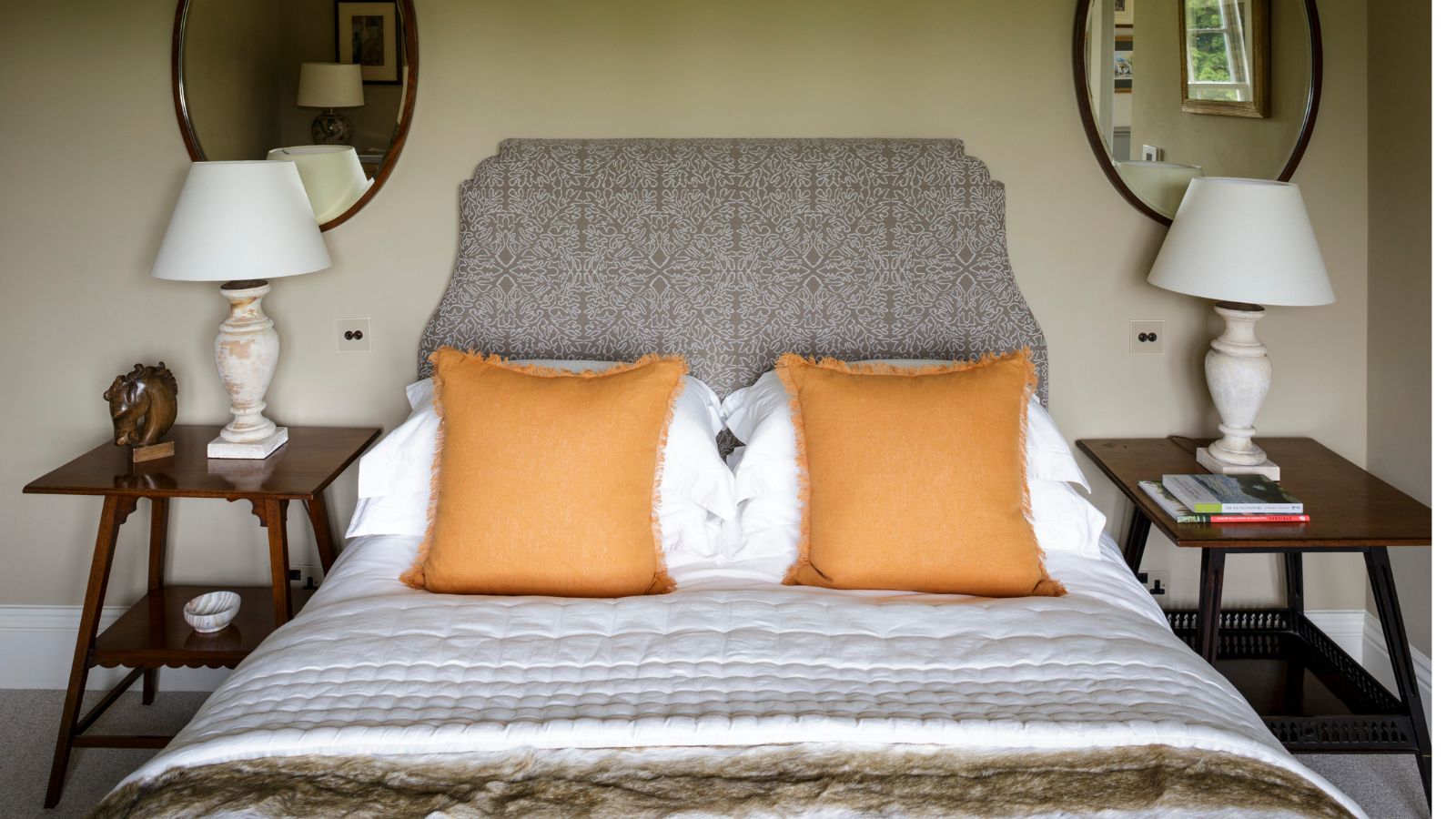How to buy bunk beds – to see your kids from toddler to teen
Make sure bunk beds are safe and supportive for growing children with our expert guide


Bunk beds are a popular choice for kids’ bedrooms. They maximize the floor area when two children share a bedroom, and when the bedroom’s for one, they make it easy to have a friend sleep over, plus sleeping high is a preference for many kids.
It’s vital that bunk beds have the best mattress to support growing bodies, and bunk beds must also be safe to use, and built to last through their young years. You’ll also need to select from different types and materials.
Here, we detail all the elements you need to consider to make a wise choice for children’s bedrooms.
How to buy bunk beds
As with all of your kids’ room ideas, the dimensions of the space are critical when choosing furniture – and that includes for bunk beds. Be sure to think height (with a minimum of 30 inches between the top of the mattress and the ceiling) as well as floor area (including that required for opening any drawers or other bedroom storage a bunk bed might incorporate) when measuring up the space.
What the bed is made from, its type and its style are important so it’s suitable now, lasts, and fits into the decor as kids get older, while ensuring it is and will remain safe is crucial.

Safety
Choosing bunk beds for kids brings with it particular safety considerations. First of all, think about access. ‘There are a lot of beds that come with actual stairs leading up to the bed, so if the kid is under eight years old, that is always my recommendation,’ says interior designer Sarah Kruse, owner and principal designer of Storie.
‘This is not to say a younger kid won’t be able to go up and down a ladder, but if they are getting up in the middle of the night to use the bathroom and are half asleep, steps might be a safer bet.’
Any bed you buy should have safety features, including guardrails along with a headboard and footboard, and you can check the requirements from the US Consumer Product Safety Commission.
Materials
Bunk beds are made from wood or metal, or a combination of the two. Wood has the advantage of being a warm and tactile finish for a bedroom, and it won’t go out of style. Look for bunk beds made from hardwood as it is both sturdy and durable and avoid softwoods and wood substitutes.
Metal beds can look sleek and streamlined and are lighter to move around if the room’s layout has to be changed. However, they are not as robust as beds made from wood.
Check the frame regularly at joints and welds to ensure it remains firm and be aware that some models of metal bed have been subject to product recall because of upper bunk collapse. Note that the wood portion of wood and metal bunk bed designs may be a trim rather than used structurally and therefore the same considerations will apply.

Choose the type of bunk bed
Standard bunk beds consist of one bed on top of another, distinguishing them from loft beds which have a top bed with perhaps a desk or storage furniture underneath.
Typically, the two beds of a bunk bed have same twin mattress size, but other combinations are available such as twin over full (double) and full over full.
Think about both the type of bunk bed and the material from which it’s made as a combination. ‘If you have a double bed under a twin, that will automatically be more sturdy,’ says Sarah Kruse. ‘If you have a twin over a twin, then ideally a wood frame, as metal can be less sound. If you do metal of twin over twin or with a twin above and open space below, it should definitely be secured to the wall.’
Pay attention to bunk bed mattresses
Buying a mattress for a bunk bed needs the same attention as buying a mattress for any of the beds in your home. Take into account its type and the support it offers.
What’s absolutely key is the depth. ‘You need to understand the exact thickness of mattress that will fit for your specific bunk; this means having a 5 inch allowance between the top of the mattress and the top of the guardrail,’ says interior designer Sarah Kruse. ‘Most bunk beds allow for mattresses in the 8 to 9 inch height range, but otherwise you should be able to select whatever kind of mattress fits your sleeping needs.’

Look to the future
While there are some cute designs for younger kids, if you want to invest in bunk beds that will see them through different stages, both the style of the design and its functionality will be decisive.
‘Versatile aesthetics are important, as well as the sturdiness of the frame and actual mattress support (since obviously it will need to support more weight),’ says Sarah Kruse. ‘I would suggest choosing a bed that is a blank canvas (black, white, or wood finish) and that can be easily adapted to changes in the room such as paint, bedding, etc.’
FAQs
What weight can bunk beds hold?
There isn’t a general answer to the question of what weight bunk beds can hold, so you should always check the specification of a particular bed you’re interested in to be sure it’s suitable. Typically, though, a top bunk bed might support a maximum weight of between 150 and 200 lbs. For higher maximum weight limits, check out bunk beds designed for use by adults.
Are bunk beds a standard size?
If you’re buying bunk beds, it’s important to check the frame measurements to ensure a particular model is the right fit for a room, but typically a bunk bed will have two standard twin size mattresses, which are each 38 x 75 inches.
A bunk bed might alternatively be a twin over full design and a full mattress is 54 x 75 inches. A full over full bunk bed will, of course, have two mattresses of this size.
Always check the specification of a particular model and mattress when you’re buying to be sure they’re compatible.
'My experience of buying bunk beds for my kids is that versatility is vital. This, for me, meant buying a bunk bed set that could be split into two twin beds. This gave us the flexibility as the kids grew to move them from bunks in a small shared bedroom through to separating them to singles as they got older and had their own bedrooms.
'Quality materials are key, too. My kids bunk beds saw my youngest (now 21) from when she was five years old right through to my youngest (now 16) sleeping in her single bed until three years ago. We then passed the bunks on to another family who has stacked them again. The mattresses have been changed but the frames still have years of life left in them.'
Sign up to the Homes & Gardens newsletter
Design expertise in your inbox – from inspiring decorating ideas and beautiful celebrity homes to practical gardening advice and shopping round-ups.

Sarah is a freelance journalist and editor. Previously executive editor of Ideal Home, she’s specialized in interiors, property and gardens for over 20 years, and covers interior design, house design, gardens, and cleaning and organizing a home for Homes & Gardens. She’s written for websites, including Houzz, Channel 4’s flagship website, 4Homes, and Future’s T3; national newspapers, including The Guardian; and magazines including Future’s Country Homes & Interiors, Homebuilding & Renovating, Period Living, and Style at Home, as well as House Beautiful, Good Homes, Grand Designs, Homes & Antiques, LandLove and The English Home among others. It’s no big surprise that she likes to put what she writes about into practice, and is a serial house renovator.
-
 5 surprisingly practical ways to re-purpose old bed sheets for cleaning, decluttering and storage at home
5 surprisingly practical ways to re-purpose old bed sheets for cleaning, decluttering and storage at homeDon't ditch worn-out bedding – there's life in them yet
By Natasha Brinsmead
-
 How to grow a cactus from seed – 6 easy, expert-approved steps for succulent success this year
How to grow a cactus from seed – 6 easy, expert-approved steps for succulent success this yearIf you love succulents, why not learn how to grow a cactus from seed this year?
By Lola Houlton
-
 7 dorm room organizing rules for less clutter and more space
7 dorm room organizing rules for less clutter and more spaceExperts offer their top tips for creating a well-organized dorm room, no matter the size, space, or layout.
By Ashley Chalmers
-
 How to maximize storage in a small or shared dorm room, according to pro organizers
How to maximize storage in a small or shared dorm room, according to pro organizersFind out all the hidden storage zones you might never have noticed
By Ashley Chalmers